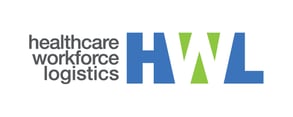Even pre-pandemic, the healthcare industry as a whole had staffing shortages. But the past few years have exacerbated such pre-existing issues, often to the point where organizations of all sizes began pivoting and re-examining their hiring and employee retention practices. This has been particularly true when hiring nurses.
A report published in April 2022 by Health Affairs found that the total supply of RNs decreased by more than 100,000 from 2020 to 2021 — the largest drop over the past 40 years. Most of them were employed in hospitals and a significant portion of them were under the age of 35. The nursing workforce needs long-term, young workers in order to be sustainable.
Here we'll go over some of the more significant impacts that recent nurse turnover rates have had as well as what companies can do to mitigate them.
The Effects of High Turnover in Nursing
1. Significant Cost Increase
In the U.S., the average cost for one registered nurse's resignation is $40,000, which winds up costing the hospital around $5 million per year. Factor in elements of turnover contagion — a domino effect that causes droves of workers to quit at once or in quick succession — and the cost becomes astronomical.
Additionally, depending on the location and specialty, the nursing turnover rate fluctuates between 8.8% - 37%. It also takes an average of 85 days for a nursing position to be filled (even longer for specialized ones) which costs an average of $82,000. This is before taking into account overtime pay that other nurses will earn while picking up the slack.
2. Increases 30-Day Hospitalization Rates
In studies conducted both in the U.S. and South Korea, findings showed that facilities with higher nurse turnover, on average, were more prone to medical errors and patient conditions worsening, thereby increasing 30-day hospitalization rates. An additional study in nursing homes correlated high nurse turnover with an increased probability of receiving infection control citations. The logic is fairly simple; when a hospital or other healthcare organization (HCO) experiences a nursing shortage, the nurses that remain are spread too thinly. This, in turn, leads to an overworked nursing staff that's more prone to error and burnout, thereby further worsening turnover rates.
When errors start becoming commonplace in a facility's standard of care, the effects are rippling. They open the possibility of litigation, cause patients to worsen rather than recover (which increases the workload for workers that are already strained), and give the facility a bad reputation in the community.
3. It Becomes Harder to Find Talent
Nobody wants to board a sinking ship; and no qualified talent wants to join a workforce that guarantees they'll work mandatory overtime or take on responsibilities outside of their job description. High turnover rates become a compounding problem in this way. Not only does it directly hemorrhage money from lost output, overtime pay, and hiring expenses, it demotivates top talent from applying in the first place.
How to Mitigate Nurse Turnover
Many of the above problems have been felt heavily by healthcare organizations of all types and sizes. However, there are some steps that can be taken in order to mitigate staff turnover, increase nurse retention, and lead to favorable patient outcomes.
Utilize a VMS for Contingent Labor
One of the easiest ways HCOs can mitigate nursing turnover is by filling in the gaps with a contingent labor force. During the staffing crisis exacerbated by the coronavirus pandemic, for example, HWL assisted multiple states in finding and managing surge staffing for unexpected increases in patient volumes. This helped them maintain a positive standard of care to mitigate further burnout, increases in resignations, and costs to the bottom line.
In fact, HWL provided top talent at reduced costs, and helped develop an internal agency for a client, leading to reduced contingent staffing costs by 30%. The need for contingent workforces only continues to increase as HCOs rely on them to fill gaps during staffing shortages. But it doesn't have to break the bank if a comprehensive VMS is at your side.
Address the Causes of Staff Burnout
While taking on contingent workers does a great deal to reduce burnout, it's important to employ best practices in talent retention to even further mitigate it. This includes, but is not limited to:
- Prioritizing people over profits: When placing more emphasis on a positive employee experience, heightened retention comes naturally; and so do the profits. Encourage staff to take breaks when they need to, show that their contributions are valued, and respect their personal time. This can be done by reducing overtime wherever possible and ensuring each staff member has a satisfactory work-life balance.
- Improve onboarding and training: While some people may thrive when tossed into the proverbial lions' den, this should not be an organization's default training method. It's important to ensure each new hire has a clear understanding of their responsibilities, how to achieve them most efficiently, and know what is expected of them at all times. Be sure to send out periodic, anonymous employee satisfaction surveys and ask about the onboarding experience to gain critical insights into what can be improved.
- Continuing education and advancement: To maintain a productive workforce, there must be career advancement in place. Employees need to be challenged in their roles; they need to feel that they are growing both personally and professionally in order to feel fulfilled in the long run. Those that feel stagnant in their position are less likely to put in effort and are more likely to cut corners or seek other opportunities.
HWL Is Your Partner in Mitigating Nursing Turnover
HWL provides a comprehensive, all-in-one VMS software platform that helps HCOs find and manage contingent labor in order to maintain effective patient care and contain costs. As more and more organizations rely on contingent nurses to fill staffing gaps, the need for a holistic management system increases. This is where HWL comes in.
We can help you create your own internal agency, streamline tedious workflows, and optimize talent acquisition procedures.
To learn more about our product, schedule a demo today!

